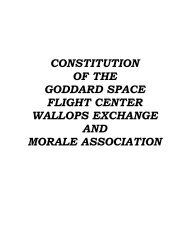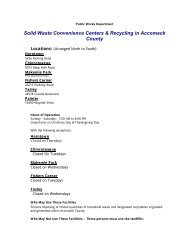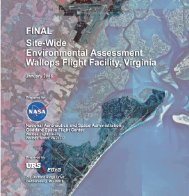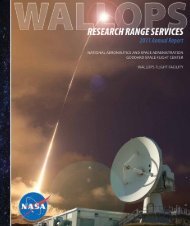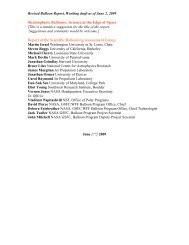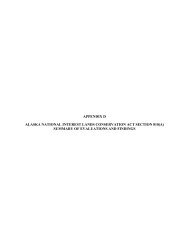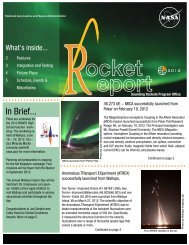WFF Frequency Utilization Management Handbook - Wallops Flight ...
WFF Frequency Utilization Management Handbook - Wallops Flight ...
WFF Frequency Utilization Management Handbook - Wallops Flight ...
Create successful ePaper yourself
Turn your PDF publications into a flip-book with our unique Google optimized e-Paper software.
800-HDBK-0001B<br />
12 of 31<br />
then determine under what conditions the radiation will take place. When adequate time is<br />
available, scheduling procedures will be used to determine priorities. Critical frequencies used<br />
by NOAA <strong>Wallops</strong> CDA Station for operational support of satellites will be given top priority.<br />
NOAA <strong>Wallops</strong> CDA Station will not be required to terminate scheduled radiations except in the<br />
case of an emergency that cannot be predicted in advance. The Director of SSOPD will order<br />
termination only after appropriate consideration and consultation with the NOAA <strong>Wallops</strong> CDA<br />
Station Manager.<br />
11. RF INTERFERENCE<br />
A. Potential Interference: All potential (predictable or anticipated) interference<br />
problems should be brought to the WFUMWG’s attention as soon as it is apparent<br />
this possibility exists. Every effort should be made to avert the potential problems<br />
before they develop by changing frequencies, schedules, etc. Unresolved problems<br />
should be brought to the attention of the appropriate organizations’ managers or<br />
operations personnel.<br />
B. Real-Time Interference: The resolutions of real-time interference problems should be<br />
expedited by whatever reasonable methods are available. When circumstances<br />
warrant and the exact source of interference is known, direct communications<br />
between the operational personnel involved should be attempted as a fast resolution<br />
with follow-up coordination with the appropriate frequency manager. If the exact<br />
source of interference is not known but is thought to originate from the operations of<br />
a known organization, the direct contact should be made with the organization’s<br />
frequency manager or the <strong>Wallops</strong> Test Director, as appropriate. He/she should then<br />
make the necessary contacts within his/her area of responsibility to determine the<br />
source and work for a resolution of the problem. The WFUMWG Chair will maintain<br />
a log of the frequency interference problems and solutions reported, either real-time<br />
or post operation, verbally or in writing. It is expected that all member organizations<br />
will cooperate in the resolution of any type of interference problem when requested.<br />
The <strong>Wallops</strong> <strong>Frequency</strong> Monitoring Facility can be used, upon request and with<br />
proper coordination, as an aid in identifying the interfering source (see section 12).<br />
C. Unmanned Interference Sources: Transmitters that operate in an unmanned<br />
configuration must have a method of disabling the RF output available to<br />
NASA/GSFC/<strong>WFF</strong>. RF radiation termination will be required only in cases where<br />
safety problems or uncontrolled RFI exists and the responsible custodian of the<br />
system cannot be contacted. Detailed information on the appropriate contacts to be<br />
made and the proper methods to be used in shutting down the system should be<br />
furnished to the WFUMWG Chair.<br />
D. Post Operation Interference Solutions: Detailed records should be maintained on<br />
interference problems that have occurred during previous operations. When the<br />
potential exists for a reoccurrence from the same source, the details should be<br />
presented either to a specific frequency manager or to the WFUMWG for<br />
consideration and resolution.<br />
Check the <strong>Wallops</strong> Documentation Web site at<br />
http://www.wff.nasa.gov to verify this is the correct version prior to use.



